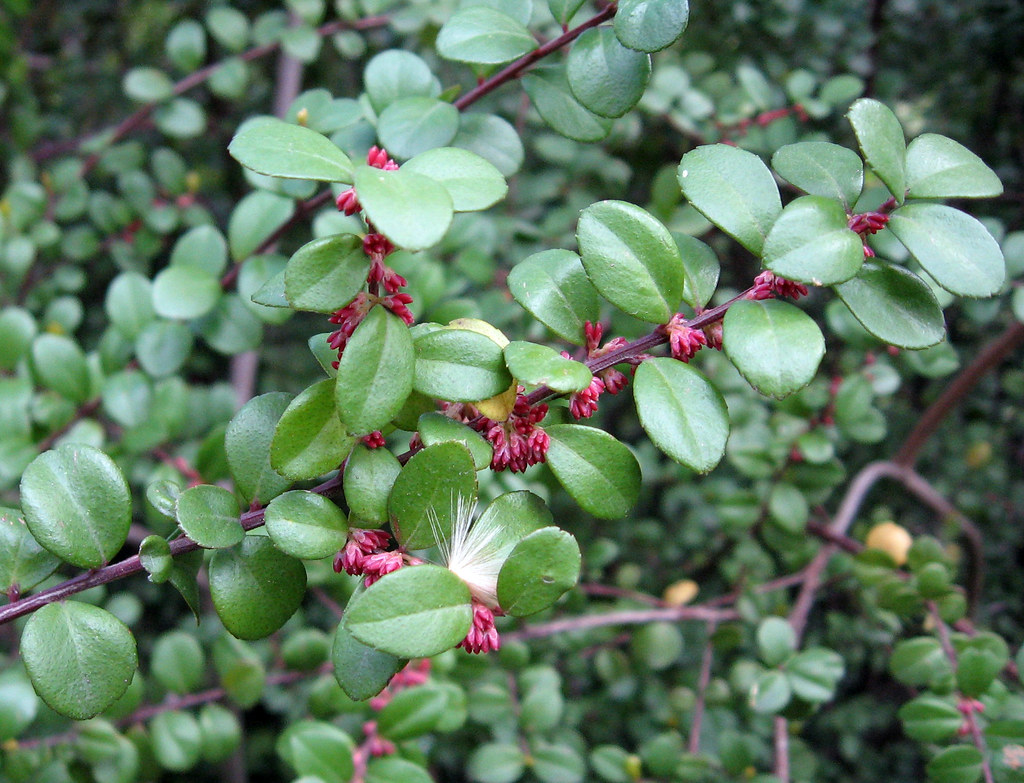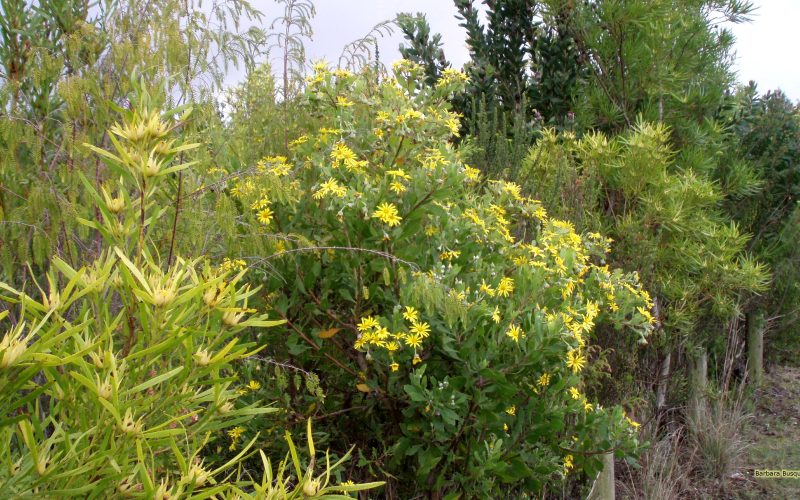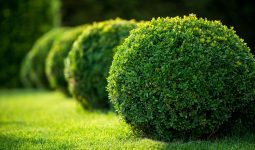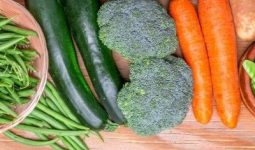Africa, being one of the largest continents in the world, has a lot of natural resources. This includes forests, herbaceous plants, trees, and shrubs.
Of course, all of these are important, but in this article, we shall discuss the different types of shrubs in Africa.
Shrubs are easy to spot because they’re often short and bushy, with only a small portion of the stem visible.
These bushes are useful in landscapes, gardens, and even food sources. Let’s look at the different shrubs you can find in Africa.
1. African Boxwood

African boxwood (Myrsine africana) has erect, dark red stems that are densely covered in small, glossy, aromatic leaves. This bordering plant can block unwanted views and add beauty to a garden.
These bushes make great topiary or shearing materials as well! Enjoy the landscape as it matures and puts on a show.
New growth first appears reddish-tinted before changing to a deep, glossy green.
The African Boxwood shrub can tolerate air pollution, making it suitable for enhancing urban landscapes with greenery and solitude! Once established, this plant won’t require much watering because it is water-wise.
They can withstand the conditions at the seacoast and do well in hot, sunny environments. This evergreen shrub is a great option because it can grow in almost any well-drained soil. In addition, you can prune it annually to maintain a tidy appearance.
2. Jasmine
Jasmine (Jasminium) is also among Africa’s different types of shrubs. However, this shrub has many species, such as Angel Wing Jasmine, Primrose Jasmine, Arabian Jasmine, Winter Jasmine, Italian Jasmine, Pink Jasmine, and Royal Jasmine.
The major difference between these jasmine varieties is their growing habits. Even though jasmine is often seen as a little plant in bloom, warmer, tropical climates can cause the plant to grow quickly and become invasive.
Furthermore, the fragrance from jasmine flowers is one of the most popular scents for products like luxury perfumes and flavored beverages.
These shrubs need regular pruning to maintain them. You can prune after their major bloom cycle.
3. Hopbush
Among the different types of shrubs in Africa is the evergreen hopbush (Dodonaea viscosa). It grows quickly, even in poor soils, and can withstand drought and windy conditions, making it useful as a barrier plant.
Hopbush produces extremely tough and durable wood, making it suitable for various uses. This wood can make anything, including walking sticks, weapons, and building supplies.
In several cases, hopbush fruit has been used instead of hops when making beer. In addition, the leaves can be used for their fragrance, and in some parts of the world, they are burned as incense at funerals.
Also, they’re good for landscaping due to their lovely green foliage. Although hopbush can tolerate little shade, it thrives in direct sunlight. In addition, it tolerates poor soil and rocky terrain and thrives even in dry environments.
This plant is popular in coastal areas due to its tolerance to salt spray and sandy soil. Hopbush needs a warm, temperate climate because it cannot tolerate frost.
4. Lion’s Ear
Lion’s ear (Leonotis leonurus), also called lion’s ear, is among the different types of shrubs in Africa. This shrub is an attractive bird food source with its bright red-orange blooms filled with nectar.
Although the lion’s ear is an excellent pollinator and is valued for its ornamental features, it is most well-known for its application in traditional herbal medicine.
Planting this exotic-looking shrub in your warm-weather garden has numerous benefits, including supporting pollinators, adding its leaves to a medicinal herb garden, and ornamental horticulture.
Furthermore, this shrub grows well in neutral loamy or sandy soil and thrives in full sun. Lion’s ear can be found in poor soils, so it doesn’t need fertilizer. However, it needs moderate watering in winter and spring.
5. Natal Plum
Carissa macrocarpa, or natal plum, is also among Africa’s different types of shrubs. Its ovate leaves are leathery, dark green, and glossy, and their fragrance is comparable to that of orange blossoms.
The best time to plant (or transplant) this shrub is in the fall or winter because of its moderate to rapid growth rate. The shrub needs two years to develop enough to produce fruit you can harvest.
Natal plum fruits ripen individually rather than all at once. You can remove them from the shrub once they turn a dark red or purple.
Don’t be surprised; they can remain ripe on the tree for several days without rotting. The fruit can last up to one week in the fridge, and you can use them to make jellies, jams, pies, and preserves.
6. Plumbago
Another example of the different types of shrubs in Africa is Plumbago (Plumbago auriculata). It is valued for its abundant blue phlox-like flowers that it consistently produces. This shrub is a good choice for a foundation plant and will develop into an evergreen shrub.
It looks lovely when you plant it over a stone or wood retaining wall, enabling its branches to cascade in a stream of greenery and stunning blue flowers. The interesting part? It blooms all year long!
7. Sicklebush
Sicklebush (Dichrostachys cinerea) is also among the bush types in Africa. The fragrant fluffy blossoms have a lilac upper half and a yellow lower half, which gives rise to its name, “Chinese lantern tree,” in other countries.
Sicklebush is a shrub that has spread to the point where it is now considered an invasive weed. It is especially problematic in areas where there has been excessive grazing.
Furthermore, the species creates highly dense thickets impenetrable in the places it invades. Also, this shrub can reproduce from even the tiniest bit of root or by its root suckers.
8. Ribbon Bush
Hypoestes aristata, commonly called Ribbon Bush or Purple Haze, is among the types of shrubs in Africa. This shrub can thrive in full sun, but it prefers semi-shade.
It only needs occasional trimming after flowering or when it gets woody with age. The shrub looks nice and tidy in the summer and is a good backdrop for a low, mixed herbaceous border.
9. Hooded-leaf Pelargonium
Pelargonium cucullatum, also known as hooded-leaf pelargonium, is a fast-growing shrub that is fairly adaptable. It can grow vegetatively or from seeds.
Once established, Pelargonium cucullatum requires little maintenance. This shrub is adaptable to coastal conditions and is great for growing in pots on a sunny patio, in informal borders, and in rockeries.
10. Puzzle Bush
Among the different types of shrubs in Africa is the Puzzle Bush (Ehretia rigida). The flowers of this shrub are lilac and have a sweet fragrance. It has long and rigid stems and branches.
Because of their rigidity, stems can be used to construct traditional fishing baskets. They can also serve as the turning stick for friction-based fire making.
Furthermore, this bush is bare in the winter and produces new leaves and flowers in the spring. The flowers are followed by tiny green berries that ripen to orange-red. Birds and other animals consume the berries.
11. Wild Rosemary
Wild rosemary (Eriocephalus africanus) is one of Africa’s most common types of shrubs. You can easily identify them with their thin, grey leaves. They also smell like Vicks when crushed.
The flowers attract many bees on warm days as they search for the flowers’ nectar. Fruits with long, white hairs begin to develop soon after flowering.
Eriocephalus is known in some parts of South Africa as kapokbos because of its lovely, fluffy seed heads resembling cotton wool or snow.
Wild rosemary has traditional uses, including treating colic, flatulence, coughs, and colds, as well as acting as a diuretic and diaphoretic.
12. False Buchu
Agothasma ovata, also called false buchu, is a tough, tiny, evergreen shrub with delicate, leathery leaves that are aromatic and have a pleasant citrus perfume when crushed.
It has a few flowers throughout the year, but during its peak flowering in the winter, it has abundant star-shaped, light pink to white flowers that almost completely conceal the leaves. They attract different types of insects to the garden.
13. False Olive
False olive (Buddleja saligna) is also among Africa’s different types of shrubs. This versatile tree will enhance your surroundings with beauty, protection, and screening. It is especially well adapted to smaller gardens.
Spring and summer bring dense clusters of tiny, white to cream-colored flowers. The blossoms at the branches’ ends, which smell like honey, draw insects and birds to the garden. This tree is ideal for bee farmers because the flowers produce a lot of pollen and nectar.
Furthermore, false olives are extremely resilient and tolerant of various soil conditions. Due to their quick growth and non-aggressive root system, they are frequently used as pioneer trees in new gardens.
14. Gum Arabic Tree
The gum Arabic tree (Vachellia nilotica) is among the shrub types in Africa and native to the Middle East and the Indian subcontinent. It’s a fast-growing evergreen tree with a broad and rounded crown.
Young plants cannot survive frosts and need a sunny location. However, it thrives in various soil conditions, including salty environments and hard clay soils. Also, it can withstand drought or flooding for several months.
Furthermore, it provides the locals with food, medication, and other commodities. The tree is also used commercially for its resin, which drips from its trunk, and for its tannins, which are extracted from its bark and seedpods.
15. Cape Honeysuckle
Cape honeysuckle (Tecoma capensis) is the last on this list of types of shrubs in Africa. It is native to South Africa and often grown in warm climates.
The leaves of this simple-to-grow shrub have five to nine diamond-shaped leaflets. From fall to spring, it blooms in clusters of yellow, apricot, red, or orange trumpet-shaped flowers.
In addition, this shrub grows well in partial shade or full sun. Also, it thrives in almost any soil type as long as it’s moist and well-drained.
The roots should be well-established enough to provide drought resistance after a year of consistent watering.
Although this plant is often trouble-free, frost can harm its leaves and branches if you operate in a frosty climate.
In addition, insufficient or excessive nutrient levels may cause issues for the plant, typically most noticeable in weak or sparse foliage.
Leaf scorch is one potential environmental issue that it has. However, with minimal care, this shrub ought to live a long and happy life.








